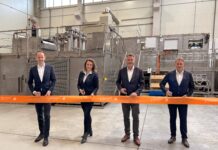
Many brands and retailers could reduce the climate impact of their packaging up to 50% and avoid thousands of tons of carbon dioxide emissions. This estimate is based on a large number of life cycle assessments performed by BillerudKorsnäs with a new tool that evaluates the environmental impact of various packaging solutions. The digital tool has received a warm welcome by customers and brand owners in their pursuit of reducing carbon emissions.
Global demand for packaging is rising with sustainability as a strong driver, which means future packaging will need to be designed so that it does not impact our climate. “There is a knowledge gap in the market,” says Johan Tegell, Business Development director at BillerudKorsnäs. “Companies don’t realize how much they can reduce their carbon and freshwater footprint from packaging. It’s about optimizing the packaging to the supply chain and choosing suitable raw materials. Normally just small adjustments are needed to get great environmental savings. This was the reason why we introduced a life cycle assessment tool to provide our customers with environmental insights about their packaging. Most customers are surprised when they see the results and realize the potential savings.”
Life cycle assessment is a technique used to assess the environmental impact associated with all the stages of a product’s life, from the extraction of raw materials through to processing, manufacturing, transportation and end-of-life treatment. Traditionally, performing one single life cycle assessment could take months of work due to the large amount of data that needs to be collected from the value chain.
The recently introduced digital tool contains an extensive database of different packaging materials, including data from BillerudKorsnäs’ own production. By selecting a number of parameters related to the packaging, such as material, size, production location, transport, and disposal method, it will show the total life cycle impact for carbon dioxide emissions and water consumption. At BillerudKorsnäs, the tool is mainly used to improve supply chain efficiency and environmental performance for customers with production in Asia. Customers can then use the information in their environmental communication and sustainability reporting.
The apparel company LPP headquartered in Poland, which has over 1,700 stores across the world, was one of the pioneers to try the new life cycle assessment tool together with BillerudKorsnäs. “Sustainability is the most important topic in today’s world, and we at LPP are very serious about taking care of the future. The cooperation with BillerudKorsnäs and the use of the life cycle assessment tool enabled LPP not only to understand but to practically reduce the emission of CO2. The implementation of BillerudKorsnäs’ packaging solutions supported LPP’s internal CO2 goals,” says Monika Kotwicka, manager of Purchasing Processes at LPP.
In the coming year, BillerudKorsnäs will further develop the tool to include more data points of different materials. The tool is third party reviewed and used on all projects within the Business Unit, Managed Packaging. For further information, please contact Johan Tegell, director of Business Development, Managed Packaging, johan.tegell@billerudkorsnas.com











